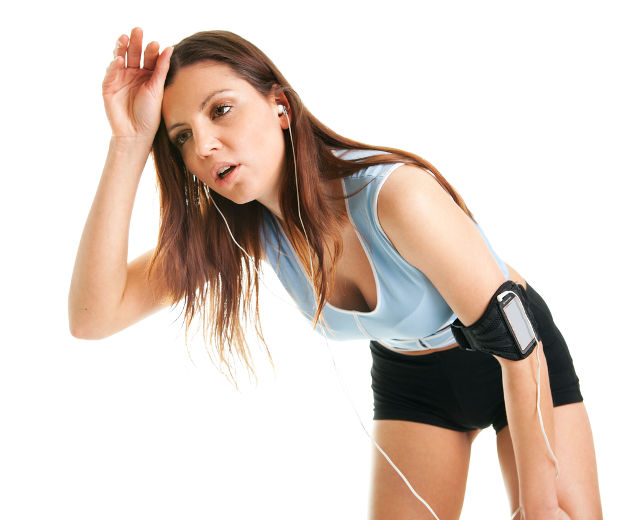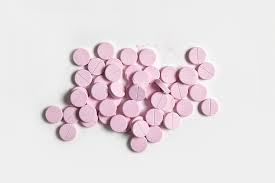Have you ever felt extremely weak after exercise? You probably had a bout of hypoglycemia, a condition when the blood glucose level is 70 mg per deciliter or lower. When you eat food, your body converts it to glucose for immediate use as a source of energy. Any excess food is converted to glycogen and stored in the liver and muscles for later use. When you engage in heavy exercises, the stored glycogen may be even used up, leading to hypoglycemia. This is how hypoglycemia and exercise are related.

Non-Diabetic Hypoglycemia After Exercise
While hypoglycemia after exercise is most common in diabetics, it also occurs in non-diabetics who engage in strenuous exercise without eating adequate food.
Symptoms
No two people get the same symptoms when they have low blood sugar. However, the following are the most common signs:
- Lightheadedness or dizziness
- Sudden hunger pangs
- Tremors or shaking
- Sudden anxiety
- Drowsiness
- Blurred vision
- Uncharacteristic emotional outbursts, mood swings and irritability
- Poor concentration
- Confusion
- Sweating profusely, irrespective of temperature
- Disturbed sleep including nightmares and night sweats
- Slurred speech
It is critical that hypoglycemia is treated immediately; otherwise the condition may lead to complications such as coma, seizure or death.
Treatment
 Ensure that you have drinks or snacks containing carbohydrates at hand. Some good options are fruit juice, glucose tablets, sweets or sugar. These will provide rapid relief in case of hypoglycemia. Follow rapid relief carbs with longer acting carbohydrate foods such as fruits, cereals, rice and bread.
Ensure that you have drinks or snacks containing carbohydrates at hand. Some good options are fruit juice, glucose tablets, sweets or sugar. These will provide rapid relief in case of hypoglycemia. Follow rapid relief carbs with longer acting carbohydrate foods such as fruits, cereals, rice and bread.
In case you are unable to eat or drink, a healthcare professional may give you glucose intravenously. Your blood sugar level may also be raised through administration of glucagon hormone.
Prevention
To prevent a bout of low blood sugar, have a snack before your exercise session. Be sure to eat breakfast if you exercise in the morning. In case you sweat heavily during your workout, replenish your fluid intake and take a snack within the training session.
You can also reduce your risk of hypoglycemia after exercise by opting for endurance exercises as opposed to strength training. Note that during endurance training, your body mainly burns fat for fuel, while it burns glycogen during strength training.
In case you mix strength and endurance exercises, do moderate endurance exercises (60-70 percent of your maximum heart rate) for the first 20 to 30 minutes, and finish with 15 to 20 minutes of the strenuous strength training. Follow this up with a glass of fruit juice, a banana or some figs to prevent a hypoglycemic episode.
Diabetic Hypoglycemia After Exercise
Treatment
If you have diabetes, beware that hypoglycemia and exercise are related. People with type 1 diabetes have a higher risk of hypoglycemia because they take insulin. If you have type 2 diabetes, the risk of low blood sugar during or after exercise should not be a major concern, unless you take insulin or its secretagogue.
 Diabetic hypoglycemia presents with similar symptoms as non-diabetic hypoglycemia. Should you get hypoglycemia during or following workout, have it treated immediately. Follow the
Diabetic hypoglycemia presents with similar symptoms as non-diabetic hypoglycemia. Should you get hypoglycemia during or following workout, have it treated immediately. Follow the
treatment routine:
- Take 15 to 20 grams of rapid acting carbohydrates such as glucose tabs, sports drink or soda.
- Relax for 15 to 20 minutes; then check your blood sugar level again.
- If your blood sugar level is low and you still have symptoms of hypoglycemia, repeat the first step.
- Once you get better, eat your regular meals and follow your normal routine to maintain stable blood sugar levels.
If you have hypoglycemia during a training session and want to resume the workout, make sure you take an adequate break to manage the condition. This will depend on the type of exercises and the amount of insulin in your blood. Ensure your glucose level has come up to at least 100 mg/dL before resuming training.
Note that the relationship between hypoglycemia and exercise is that hypoglycemia may occur during or after a training session more likely if:
- You are on insulin or its secretagogue.
- You have a long exercise session.
- You do strenuous exercises.
- You have skipped a meal, or don’t eat or drink something 30 minutes to 2 hours after exercising.
Prevention
1. Check Your Blood Sugar Before, During, and After Exercise
Take blood sugar tests before, during and after an exercise session and keep these records. This is critical if your diabetes was recently diagnosed or you plan to start exercising. Your records should include the following:
- Time and date of starting exercise program
- Blood sugar level before exercise
- Dose of insulin or medication prior to exercise
- Time of taking insulin or tablets
- Time you completed exercise session
- Blood sugar level immediately after exercise
Share your records with a healthcare provider in case you have a problem. It’s also a good habit to track your blood sugar levels in case you change the type or length of exercise session.
2. Eat Before Heavy Exercise
If you exercise around meal time, eat your meal before exercising. Better still, set your exercise routine 30-60 minutes after your meal or snack. Note that:
- Liquids are absorbed faster than solids. While they are faster at treating hypoglycemia, they only prevent it for 30-60 minutes.
- Digestion of solids takes longer. For this reason, solid foods will maintain a healthy blood sugar level for up to 3 hours.
3. Have Extra Snacks Available During Exercise
- Because of the hypoglycemia and exercise relationship, keep a source of sugar such as glucose tabs or sugar cube at hand at all times.
- Also carry another snack such as a sandwich.
- Keep water and other liquids such as fruit juice and milk at hand, especially in hot weather.
4. Change the Insulin Dose
Before you start an exercise program, talk to a healthcare provider who will guide you on any necessary changes to your dose of insulin to match your exercise routine. In any case, do not exercise during insulin peak periods. You can get information about your insulin peak periods from your healthcare provider.
5. Change the Injection Site
Your insulin injection site and the type of exercise may have an effect on your body’s insulin absorption. Exercise will increase blood flow, especially within the moving parts. This hastens insulin absorption. Avoid injecting insulin into a leg or an arm that will be involved in strenuous exercises. Choose the abdomen for insulin injections before exercise.
6. Make Sure Others Know
Always wear a medical alert necklace or bracelet. If you belong in a team, inform at least one member that you have diabetes and share information about where you keep your low sugar treatment snacks.
